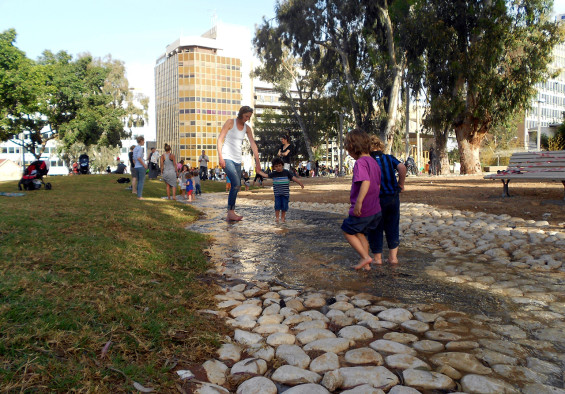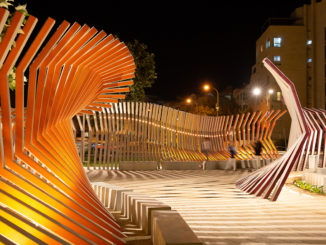Kiryat Sefer Park is one of the last remaining open spaces in the densely populated center of Tel Aviv. In the mid-1990s, the lot which had previously served as a police garage became vacant and plans for the construction of a high-rise residential complex in its place began. These plans sparked a 15 year long community campaign advocating for an ecological and democratic public park. In 2010 this campaign achieved its goal when the municipality decided to build a public park instead of the housing project.
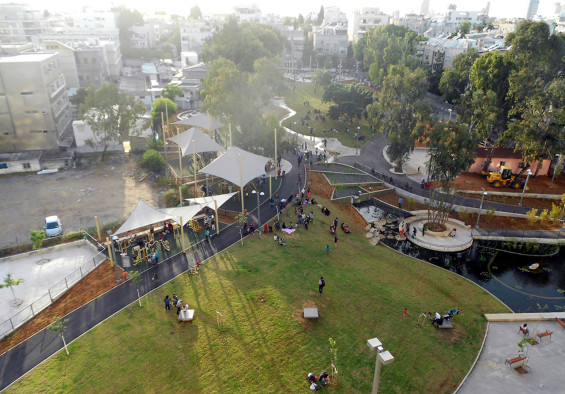
Our work included an unprecedented public involvement in the planning process, which contributed a range of ideas from design principles to localized details.
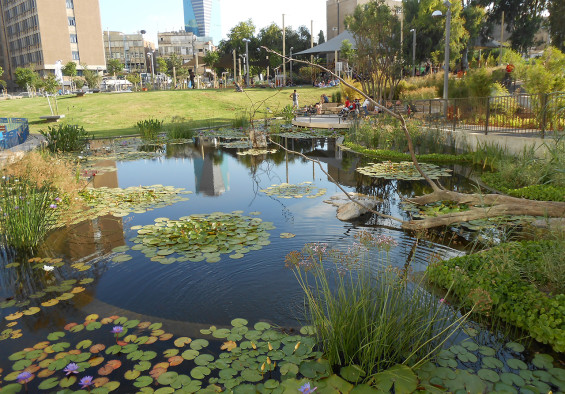
Environmental concern was expressed in the maximized use of existing materials in the construction of the park: the general layout was generated by the existing Ficus and Eucallyptus trees, an asphalt parking lot was converted to a streambed, and concrete debris was used to create rapids in the waterway. A mature Christ’s Thorn Jujube (Ziziphus spina-christi) tree was brought from another construction site where it had to be dug out, and replanted in a central location in the park, creating a local landmark.
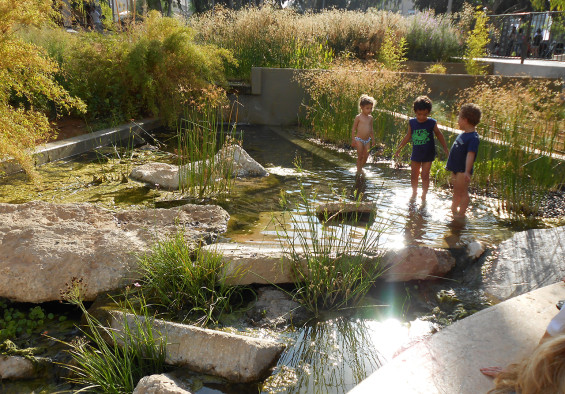
A series of elements in the park represent the water cycle in nature: on the top side of the park there is a water table with clear reflective surface, and gentle drops fall onto it slowly, symbolizing “rain”. Every afternoon additional water is being discharged into the water table, creating an overflow that permeates an underground draining system and comes out as a spring under a rock, some 70 meters downwards Thus, the dry streambed becomes flooded for half an hour, creating a daily happening, with chidren and adults gathering to follow the stream and play in and around it. The water then flows to a biofilter system, through a series of small rapids and down to a large lily pond, attracting both people and wild birds.
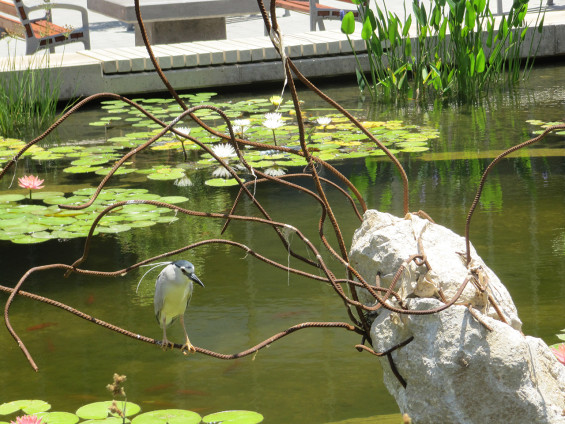
The park includes several spaces that allow community activities: a big round table that can accommodate 20-30 people for meetings or celebrations; a herb garden and community gardens in which local residents practice horticulture; and a children playground, a dog run, outdoor gym and vast lawns.
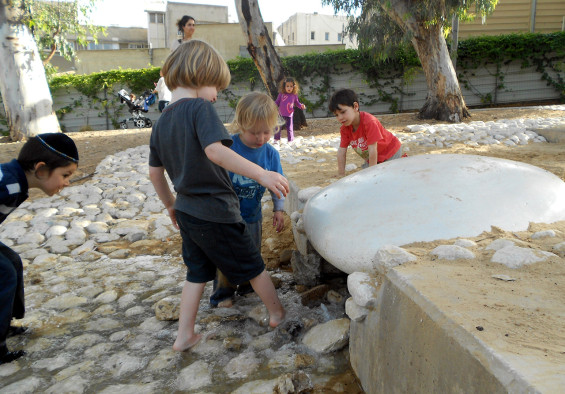
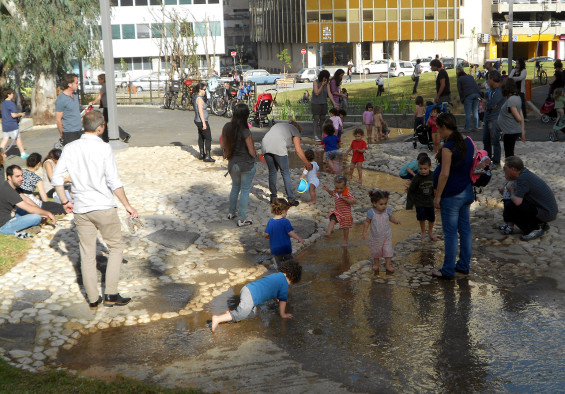
Another attraction in the park is the “Hidden Treasure” – a project that involved the community in the construction phase of the park. Together with artist Yoav Weiss, we constructed the “Hidden Treasure community art work”. Members of the community, and in particular school children, were invited to create a time capsule to be buried in the ground of the park for future generations. These “treasures” were made from 6x6cm concrete cubes. Each one cast in two different colors. Once the base part was poured in, the participants embedded a small “gift” they brought with them into the soft concrete, and then covered them with a second layer. The ready cubes, 4,300 of them, were then buried in the park’s ground (image 08), to be dug up and discovered by children in future generations. Some have already been found, and others await for years ahead.
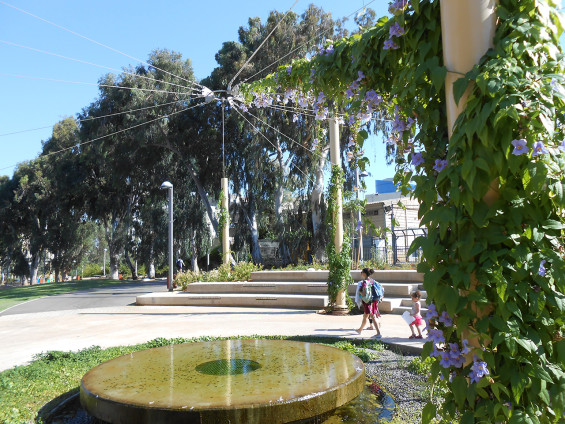
The Park opened to the public in March 2013, and was instantly accepted by locals and visitors alike, receiving outstanding reviews in local and national media. It has since become one of the most used parks in Tel Aviv.
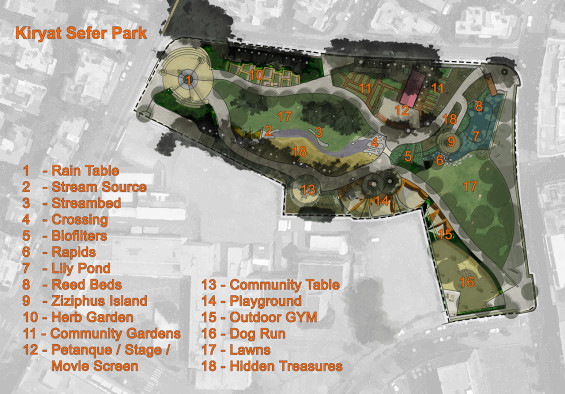
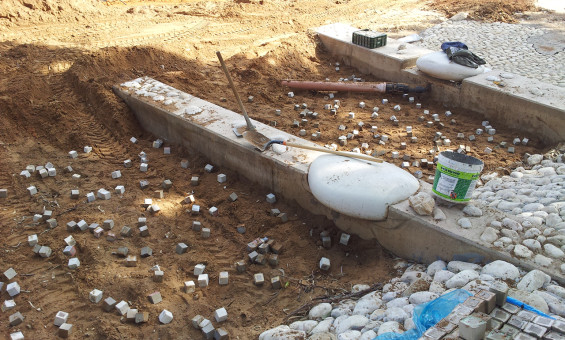
Kiryat Sefer Park | Tel Aviv, Israel | Ram Eisenberg Environmental Design
Location | Tel Aviv, Israel
Design firm | Ram Eisenberg Environmental Design
Client | Tel Aviv Municipality
Designer | Ram Eisenberg
Project manager | Ami Yaffe
Construction company | Weinbeg Brothers
Consultants |
Construction | Jacob Livni
Water systems | Yael Ben Zvi
“Hidden Treasure” artist | Yoav Weiss

